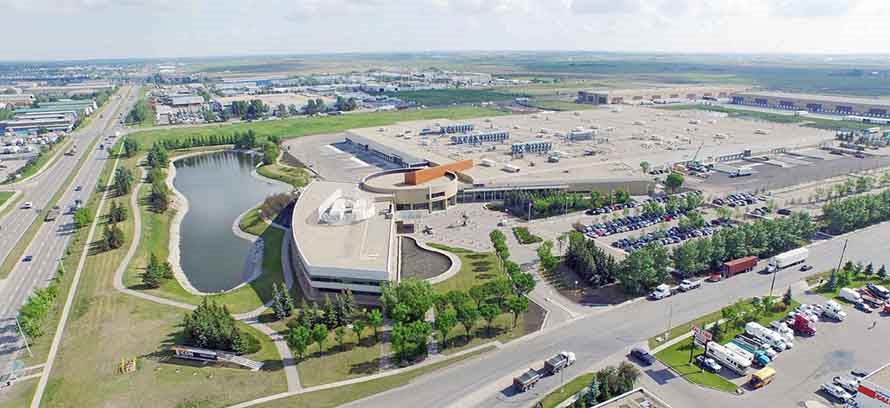Calgary
Calgary’s economy is forecast to grow in 2018 for the second time in four years, advancing to a still-not-spectacular 2.2 per cent rise in GDP numbers.
In general, new real estate development has slowed since 2015 as investors focused on cash flow of current projects as a glut of office and multi-family space overhung the market.
But, according to a survey by PwC Canada, more Alberta and Calgary real estate firms are now on “the lookout for potential opportunities.”
It will take some time for construction activity to pick up, PwC noted.
The big challenge is Calgary’s office sector, which has an estimated 27 per cent vacancy rate as gleaming new towers complete.
The city’s industrial market looks much more solid. The vacancy rate dipped to 6.9 per cent late in 2017, compared to 7.4 per cent a year earlier, said Colliers International in noting “positive momentum” heading into 2018.
The industrial recovery is being led by demand for distribution space from a surprisingly strong retail spending that averages more than $6 billion a month.
The Bank of Canada anticipates oil prices rising to $70 per barrel over the next five years, which suggests cautious investment.
Edmonton
Rising oil prices have helped Edmonton pull out of its economic slump and return to growth. The city’s economy advanced 2.4 per cent in 2017 and forecast to expand another 2.2 per cent this year, according to the Bank of Canada.
Alberta’s capital city is still grappling with an abundance of Class A office space, where vacancy rates are nearly 18 per cent.
There is potential that more office building conversions will take place, lowering the vacancy rate further, but the addition of Stantec Tower in 2018 will increase the vacancy rate once again.
Office landlords are offering incentives to attract tenants, but expectations are that it will take five years or more for the market to absorb all the new space.
Edmonton’s industrial sector had a vacancy rate of 6.2 per cent in the third-quarter of last year, down from 6.9 per cent in the second quarter.
Winnipeg
A crucial development in Winnipeg is the planned construction of a trio of multi-tenant industrial buildings in the Inkster Industrial Park in the north part of town. Vancouver-based Quadreal plans to build a pair of 50,000-square-foot buildings and one 100,000-square-foot structure on the site.
“Finally, somebody is building enough inventory that will meet the demand that’s out there,” said Tom Derrett, vice-president of industrial at Colliers International,
With construction expected to wrap by next fall, Derrett said if long-term absorption trends continue, it should all be full nine months later.
“Space doesn’t lease until it’s built in Winnipeg. We’re a touchy-feely market,” he said.
The addition of the Outlet Collection mall and its 100 stores in May, is increasing Winnipeg’s retail orbit, which agents say is now drawing shoppers from Saskatchewan and even Thunder Bay, Ontario.
The biggest challenge next year is going to be filling all of the soon-to-be-empty Sears stores.
Winnipeg’s office market is also bracing for a seismic shift with True North Square, a four-tower project that will add nearly 400,000 square feet of office space downtown.
The 17-storey office building will be the city’s first AAA office space, and the trickle down effects are already being felt. A growing number of businesses in B and C space are looking to upgrade, and 201 Portage, one of the three landmark towers at the corner of Portage and Main, is preparing to lose a number of high-profile tenants, including law firm Thompson Dorfman Sweatman.
The newest and tallest of the trio currently has single-digit vacancy, but that may rise in the short term. The Richardson Building and 360 Main Street, the other two towers at the famous corner, have locked up their long-term tenant base. In fact, 360 Main has leased 120,000 square feet over six floors to the Canada Revenue Agency.
Saskatoon
Retailers in Saskatoon are gravitating towards newer spaces but the sector continues to be a rock in the city’s real estate sector, according to year-end numbers at ICR Commercial Real Estate.
“As the city has expanded, there are more retail options,” said Barry Stuart, managing partner and senior sales associate with ICR.
The demand for shop space within new neighbourhoods is putting upward pressure on lease rates, but some older centres have responded by reducing rates and offering tenant inducements to remain competitive, he said.
“Retail has been [Saskatoon’s] shining light for the last number of years. Industrial and office have struggled but they’ve stabilized now,” Stuart said.



